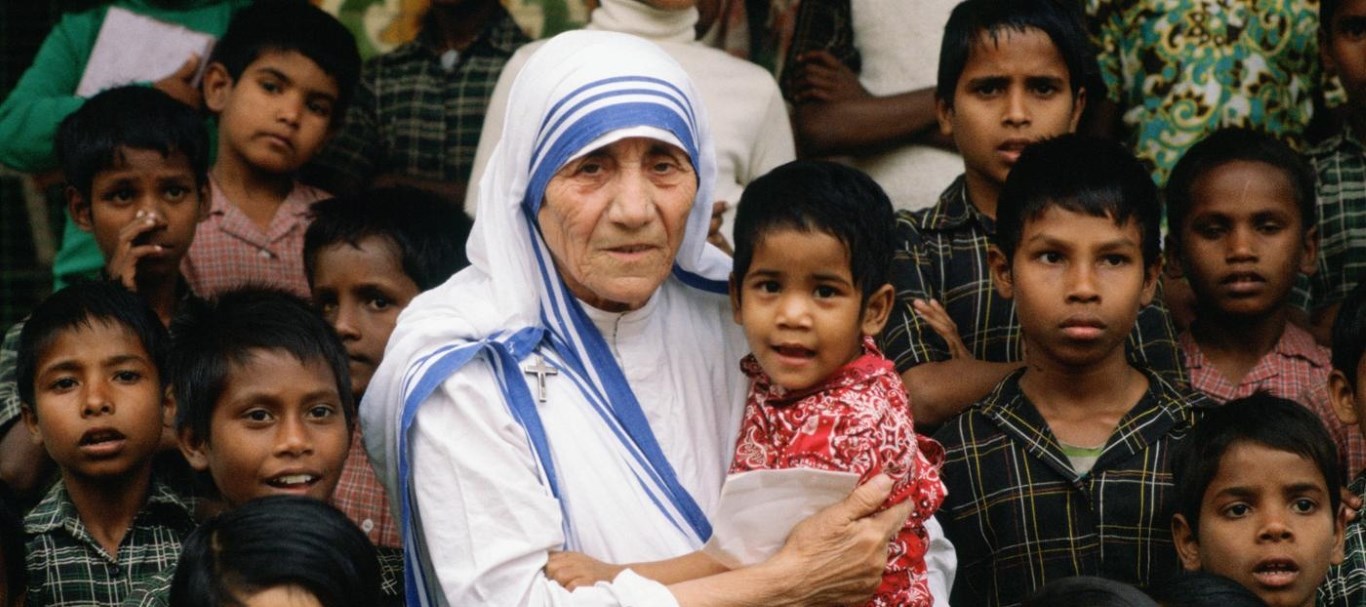Mother Teresa’s humanity
September 18, 2017 | Expert Insights

Twenty years after her passing, Mother Teresa is still beloved by millions across the world. Her charitable acts still resonate and inspire.
Background
Mother Teresa (Saint Teresa of Calcutta) is beloved even today by millions across the world for dedicating her life to helping those dying of HIV/AIDS, leprosy and tuberculosis in India.
Mother Teresa was born Anjezë Gonxhe in 1910. Her father was involved in politics and she spent her childhood in Skopje. According to some reports, Teresa was interested in the work done by missionaries by the time she was 12 years old. It was during this period, she committed herself to following the same path. She left home when she was just 18 years old and joined the Sisters of Loreto at Loreto Abbey in Rathfarnham, Ireland. Her goal was to learn English and become a missionary herself. She did not see her mother or sister after that in her life. A year later, she arrived in India to begin her work helping those in need. She taught at a convent in Darjeeling and learnt Bengali during this period. At 1937, she took her solemn vow. She was a teacher at the Loreto convent school in Entally, eastern Calcutta for close to two decades and eventually became the institute’s headmistress. Even though she loved her life as a teacher, she also was deeply affected by the poverty at display in Calcutta especially the suffering she witnessed during the Bengal Famine.
In 1948, she had left her school behind to begin working to help and aid the poor in the city. It was then, when she transformed from Sister Teresa to Mother Teresa, as she was affectionately called by the millions across Calcutta and India.
Analysis
Mother Teresa along with a few other dedicated women declared her intent of helping the “poorest of the poor.” Soon, her deeds not only caught the eye of the public but also gained attention from the Indian government. In one of her diary entries during the early years she wrote, “Our Lord wants me to be a free nun covered with the poverty of the cross. Today, I learned a good lesson. The poverty of the poor must be so hard for them. While looking for a home I walked and walked till my arms and legs ached. I thought how much they must ache in body and soul, looking for a home, food and health.”
Her main charitable organization, the Missionaries of Charity was founded in 1950. Mother Teresa by now has gained world renown through her charitable demeanor. In 1979, Mother Teresa was awarded the Nobel Peace Prize and became a symbol of charitable, selfless work. Despite declining health, she continued her work till the 1990s. In 1997, she passed away and she was honored not only by the Indian government but by governments and prominent personalities across the world.
During her life, Mother Teresa was also subject to some criticism. The Missionaries of Charity was criticized for not providing adequate healthcare to those in need. Some of her views and motives have also been questioned. In 2016, Mother Teresa was canonized by the Roman Catholic Church as Saint Teresa. Her foundation continues to function around the world still aiding those in dire need.
Similar to the life led by Mother Teresa, there have been those who have chosen to lead the path of serving the society. Most recently, Father Tom Uzhunnalil, the Indian priest who had been held captive for over a year by terrorists in Yemen, was released. Despite warnings from the Indian government, he had chosen to remain in Yemen to be the Chaplain of the Missionaries of Charity home in Aden.
Religious organizations in the word have frequently come together to help those experiencing hardships. In India, the Ramakrishna Mission, which was founded by Swami Vivekananda in 1897, continues to work extensively in health care, disaster relief, rural management, tribal welfare, and education.
Assessment
Our assessment is that Mother Teresa’s legacy of helping the poorest of the poor continues to this day. What is it about men and women like Mother Teresa that urges them to sacrifice their own lives for the well-being of others? Is it due to an innate sense of responsibility for humanity? Or is it a way to aid in religious conversion?








Comments